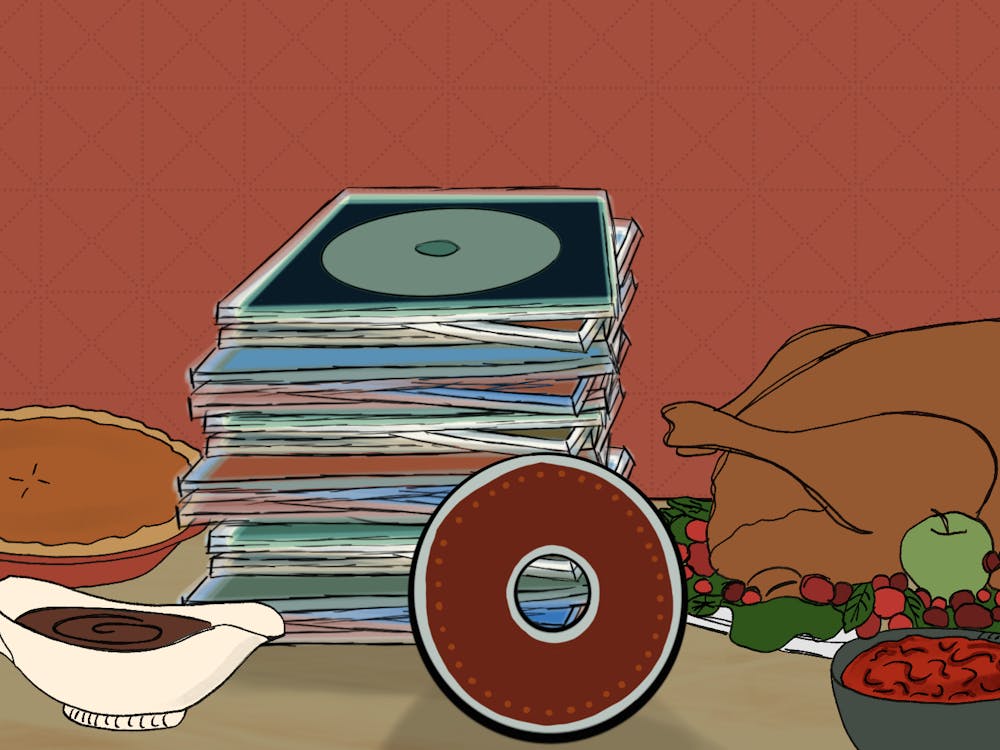In an era where cinema grows increasingly saturated with reboots, sequels and straight-to-streaming offerings, thinking about the future of creative filmmaking can sometimes feel disheartening. However, 2025 has been a beacon of hope thus far, featuring a number of wholly unique releases. Some of the most shining examples include the soulful and sexy vampire romp “Sinners,” the subversive horror-comedy “Weapons” and now, the most recent addition to mammoth director Paul Thomas Anderson’s diverse catalogue — “One Battle After Another.”
Like the aforementioned films, “One Battle After Another” is a refreshingly original movie that delivers on both comedy and action. Unlike the others, “One Battle After Another” tackles its heavy subjects primarily without allegory or metaphor, crafting a film that provides a nuanced and often hopeful portrait of humanity while also reflecting the current absurdity and brutality of American politics with unnerving accuracy.
“One Battle After Another” follows ex-revolutionary Pat Calhoun, played by Leonardo DiCaprio, and his attempts to rescue his daughter from the clutches of anti-immigrant Colonel Steven J. Lockjaw, played by Sean Penn. The film begins 16 years earlier, opening with the revolutionary group, the French 75, breaking out immigrants from a detention center in California. Here, militant Perfidia Beverly Hills, played by Teyana Taylor, has her first run-in with Lockjaw, which leads to a complicated physical relationship that stands in tension with her romantic partnership with Pat.
Delivering a commanding and sensual performance, Taylor completely owns the first act. The beginning centers around her moral decline — she leaves Pat to raise their newborn daughter by himself, evades prison by ratting out the other French 75 members and breaks out of witness protection, exiting the country and the film, to the dismay of the heartbroken Lockjaw.
The film then jumps to the present, where Pat has assumed the new identity “Bob Ferguson” and lives off the grid with his daughter Willa, played by Chase Infiniti. Their relative peace is broken when Lockjaw returns to destroy evidence of his possible mixed-race daughter with Perfidia, which would ruin his chances of joining the Christmas Adventurers Club. This is a rich white-supremacist group with significant influence in American politics and Lockjaw will stop at nothing to get invited in. The film really begins to hold true to its title, when Pat, aided by old revolutionary allies and newer local friends, frantically attempts to save his daughter.
The relationship between Pat and Willa is the core of this film. Their scenes are filled with unspoken love and angsty accuracy, and some of both actors' best scenes are ones in which they are portraying the mundane father-daughter lifestyle, whether it be arguing about going to a dance or rolling their eyes at each other’s jokes. Every moment is genuinely heartfelt, which makes sense considering that Anderson is a father of four.
The film blends chaos and intentionality from the start, with sharp editing that jumps through scenes, bolstered by a frenetic score composed by “Radiohead” guitarist Jonny Greenwood. The film was shot on the older VistaVision format, which runs film horizontally instead of vertically to create a frame two times larger than standard 35 mm film. The effect is a larger, higher-quality image and in “One Battle After Another,” this technique results in stunning cinematography, standing out especially in desert landscape scenes. Cinematic moments such as this build like a pressure-cooker creating almost unbearable suspense.
The burning of the sanctuary city intercut with a group of undocumented immigrants escaping the raids is a particularly stressful example of this suspense. However, Anderson undercuts this chaotic tension with the calmness of Sensei Sergio St. Carlos, played by Benicio del Toro, who runs an underground railroad helping undocumented immigrants — and steals every scene that he is in. While some aspects of the French 75 may be a critique on the left’s self-serving motivations for revolution, the Sensei’s underground railroad feels like a celebration of human resilience. The Sensei’s group is simpler and less violent, but moves with purpose and is ultimately more successful.
Like most of Anderson’s films, this movie has a staggering run-time, falling just 10 minutes short of three hours. However, unlike past Anderson endeavors such as “Licorice Pizza,” which dragged throughout, “One Battle After Another” captures and holds attention for the entirety of its runtime — a testament to its airtight script and pacing.
The film balances tone perfectly and is consistently laugh-out-loud funny throughout its runtime. DiCaprio is a special highlight, really getting to show off his comedic chops. His constantly high and paranoid character allows him to play up the stoner humor. The ridiculousness of the Christmas Adventurers Club is also purposefully hammed up, although the rhetoric that they espouse sounds scarily familiar. The absurdism is both comedic and purposeful, Anderson uses it to hold up a mirror to current society.
Anderson contrasts the far-fetched situations with images of grounded realism, like shivering immigrants huddled in a corner. This juxtaposition between campy absurdity and real human suffering feels entirely pertinent to 2025, and the successful capturing of these nuances turns “One Battle After Another” into a visual time-capsule that will undoubtedly be looked back upon in the future with a deep appreciation.
“One Battle After Another” juggles a lot of ideas, somehow successfully mixing a heartfelt father-daughter tale with biting political commentary into an entertaining, action-packed thriller. The film builds on its recurring theme of cycles, with the title alluding to the inevitable circle of conflict and the continual lack of change. However, the film ends on a hopeful note, with Willa following her parents footsteps to fight for progress. The battles may continue, but good people will appear in every cycle. With a shout, DiCaprio’s character summarizes this film’s point best in three words — “Viva la Revolución!”







